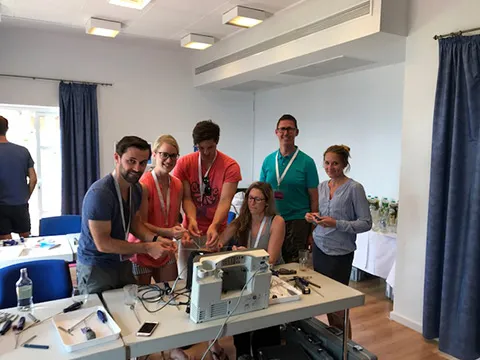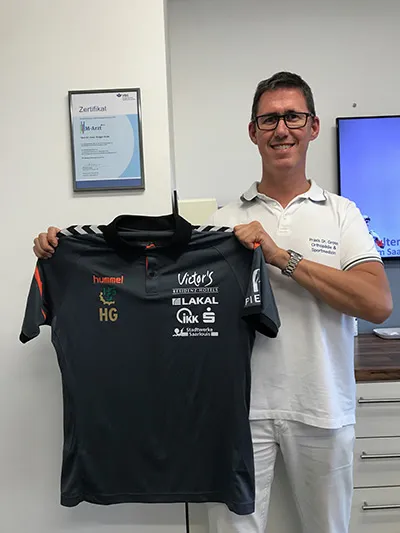
As the team doctor for the HG Saarlouis 2nd Bundesliga team, I received the official team shirt for the 2017/2018 season today.
The initials HG don't stand for HG Saarlouis, but for Holger Groß. What a nice coincidence.
It's incomprehensible that needle lavage for the treatment of calcific tendencies continues to lead a shadowy existence in Germany. With more than 4,000 treatments performed in the last nine years, our practice is by far the leader in Germany.
Abroad, the picture is completely different. More and more studies are being published that clearly demonstrate that needle lavage is a safe and highly promising procedure for treating calcific tendons.
After a Level 1 study was published last year (Level 1 means the highest scientific validity), several more studies were published this year, all with very good results.
A selection of the study summaries can be found in our downloads section.
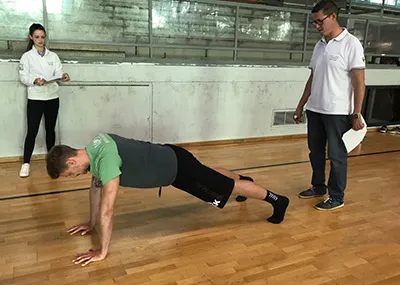
Last Wednesday, our practice held a special event. In the evening, the entire practice met with the handball professionals from HG Saarlouis at the Stadtgartenhalle Saarlouis.
I have been certified as a certified M-doctor by the BG (German Employers' Liability Insurance Association) since 2016. The employers' liability insurance association awards this additional qualification to doctors who care for professional teams and have the appropriate qualifications in sports medicine. One of the most important goals of a certified M-doctor is not, as many people think, the treatment of sports injuries. That is certainly an important aspect. More important, however, is the prevention of such injuries. After all, a team can only be successful as a team if the players are healthy and fit for action. It doesn't help a team if injuries are treated well but the players are out for months.
As part of our prevention mission, we tested the professional handball players of HG Saarlouis. In addition to various mobility tests, we primarily used static and dynamic stabilization tests.
It was fascinating to observe that some of the truly well-trained professionals exhibited noticeable deficits in mobility or dynamic stabilization. As part of the preparation for the new season, these deficits are now being specifically addressed to prevent sports injuries from occurring in the first place.
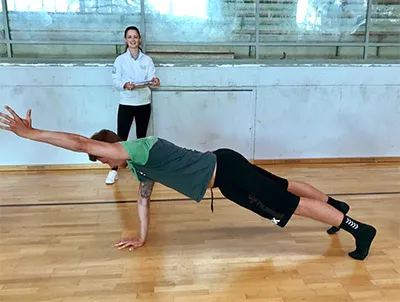
The most common diagnosis in Germany is shoulder impingement syndrome. However, impingement syndrome isn't actually a diagnosis. In fact, a variety of different medical conditions can lead to pinching of the shoulder joint—known as impingement.
At the end of May 2017, I spoke at the Ormedicum International Congress in Fuerteventura, reporting on the latest findings on impingement syndrome. The article on impingement syndrome will be updated on our website in the coming weeks.
Unfortunately, surgery is still indicated far too frequently, with the acromion being reduced or reamed out, and a bone spur removed, even though this is often not the cause of the symptoms.
Look forward to our new article.
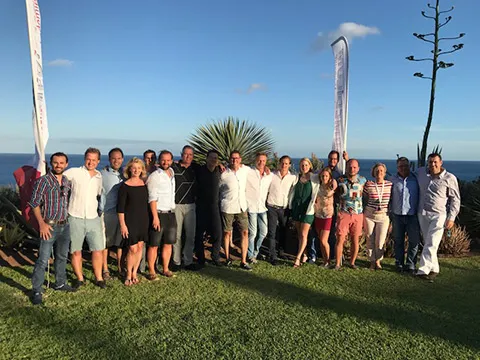
Last week, I participated in the Ormedicum scientific academy in Fuerteventura. My expertise as a shoulder specialist was in demand at this high-profile event. As part of the main program, I gave a presentation on the latest developments in shoulder impingement syndrome.
In the following days, I led the shoulder arthroscopy course at the junior program. There, I was able to show some very dedicated young colleagues tips and tricks of arthroscopic shoulder surgery. In addition to models, two modern surgical simulators were used.
But I didn't just give presentations myself. I also had the chance to listen to many other specialists talk about their specialties, such as hip arthroscopy or cruciate ligament surgery. I gained a lot of new insights for my daily work, from which I, and especially my patients, will benefit.
